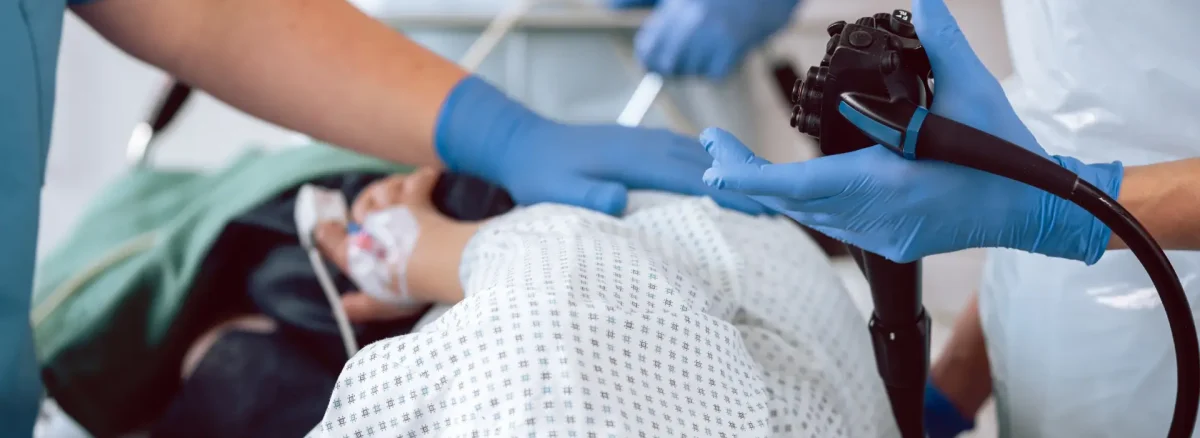- July 2, 2025
- Web Editorial Board
- Health Guide, Treatment Methods and Operations
Endoscopic Probiotic Administration
Endoscopic probiotic administration aims to enhance comfort by combining the classic colon cleansing procedure with a gut flora-friendly approach.
Bowel wash (enema) is a classic procedure aimed at emptying waste from the large intestine with the aid of liquid. Endoscopic probiotic administration, on the other hand, is a modern approach that combines this mechanical cleansing with live beneficial bacterial cultures such as Lactobacillus and Bifidobacterium, aiming to support microbiota balance. The procedure is being researched in the USA and some endoscopy centers to reduce the side effects of colonoscopy preparations or to enhance symptom control in functional bowel diseases like irritable bowel syndrome (IBS).
What is Endoscopic Probiotic Administration?
A probiotic enema involves administering a solution prepared by adding a specific concentration of probiotics into sterile isotonic solution to the colon at low pressure. The aim is to simultaneously restore beneficial bacteria lost during mechanical evacuation and to balance pH and the mucosal barrier.
How does it work?
During the procedure:
- The enema fluid slowly advances from the rectum into the colon.
- Waste and toxins are removed through dilution and evacuation.
- Probiotics in the solution adhere to the colon, produce short-chain fatty acids (SCFAs), and suppress pathogenic growth.
This triple effect can provide secondary support to the immune system by reducing intestinal permeability.
Who is it suitable for?
- Pre-Colonoscopy Preparation: Cases experiencing gas-bloating after standard high-volume laxatives.
- Functional Bowel Disorders: IBS, chronic constipation.
- Post-Antibiotic Microbiota Support.
Evaluation by a gastroenterology specialist is absolutely necessary; it is not recommended in cases with active inflammatory bowel disease (IBD) exacerbation, severe cardiovascular instability, or a history of rectal surgery.
Pre-Procedure Preparation
Prior to the procedure, a “low-residue diet” restricted in pulp-fiber is recommended, and fluid intake is increased. The schedule of prescribed medications should be planned in consultation with a physician.
Step-by-Step Procedure
The endoscopic probiotic administration procedure progresses as follows:
- Rectal Catheter Placement
- Administration of Probiotic Solution at Body Temperature
- Waiting and Evacuation (5–10 min)
- Second Application (Repeat if Necessary)
It should be performed by experienced personnel with single-use sterile equipment.
Potential Benefits and Scientific Evidence
- Significant reduction in gas, pain, and bloating after colonoscopy.
- Ensures the preservation of mucosal integrity by increasing SCFA production.
- Prevents short-term dysbiosis. Standard enemas temporarily disrupt the flora, while probiotic support can rapidly restore balance.
Possible Risks and Side Effects
As with any invasive bowel procedure:
- Rectal irritation, mild cramping.
- Electrolyte imbalance (rarely).
- Risk of sepsis in immunocompromised patients (isolated case reports).
Central sterilization protocols and probiotic strain safety are critically important.
What is the difference between probiotics and prebiotics?
- Probiotic: Live microorganisms (e.g., L. rhamnosus).
- Prebiotic: Soluble fibers that are a food source for these bacteria (e.g., inulin).
Combined use is synergistic for a healthy flora; however, the enema method typically contains probiotics, while prebiotics are taken orally.
Frequently Asked Questions About Endoscopic Probiotic Administration
1- Is endoscopic probiotic administration safe?
When performed by trained personnel and with sterile equipment, it’s generally safe; however, as with any medical procedure, there’s a risk of complications.
2- How long does the procedure take?
It typically takes an average of 20–30 minutes, including catheter placement and evacuation.
3- How many sessions are needed?
Most centers perform a single session; however, protocols of 2–3 sessions also exist depending on the clinical goal.
4- Can I perform it myself at home?
It’s not recommended without medical supervision; incorrect application can lead to dehydration or infection.
5- Can it be used instead of laxatives for colonoscopy preparation?
It has been investigated in some studies as a supplement to low-volume preparations; it has not yet replaced standard laxatives on its own.
6- Does it help with weight loss?
It doesn’t increase calorie burning; any weight effect is limited to temporary fluid loss.
7- Is it effective in treating constipation?
While it provides short-term relief, the primary treatment for chronic constipation involves diet, fluid intake, and lifestyle changes.
8- Can it be applied to pregnant women?
It’s not routinely applied during pregnancy. A risk-benefit assessment is essential.
9- When should side effects be reported to a doctor?
If you experience abdominal pain lasting longer than 48 hours, fever, bleeding, or severe diarrhea, consult a physician.
10- What should I eat after the procedure?
It’s recommended to eat a light, low-fiber diet and drink plenty of fluids for 24 hours after the procedure, then gradually transition to fibrous foods.
References
- World Health Organization
- Centers for Disease Control and Prevention
- Mayo Clinic
- Cleveland Clinic
- NHS
- UpToDate
- Medscape
- Johns Hopkins Medicine
- Stanford Health Care
- Harvard Health Publishing
- Nature
- The Cochrane Library
- American Gastroenterological Association
- PubMed
- Clinical Endoscopy


